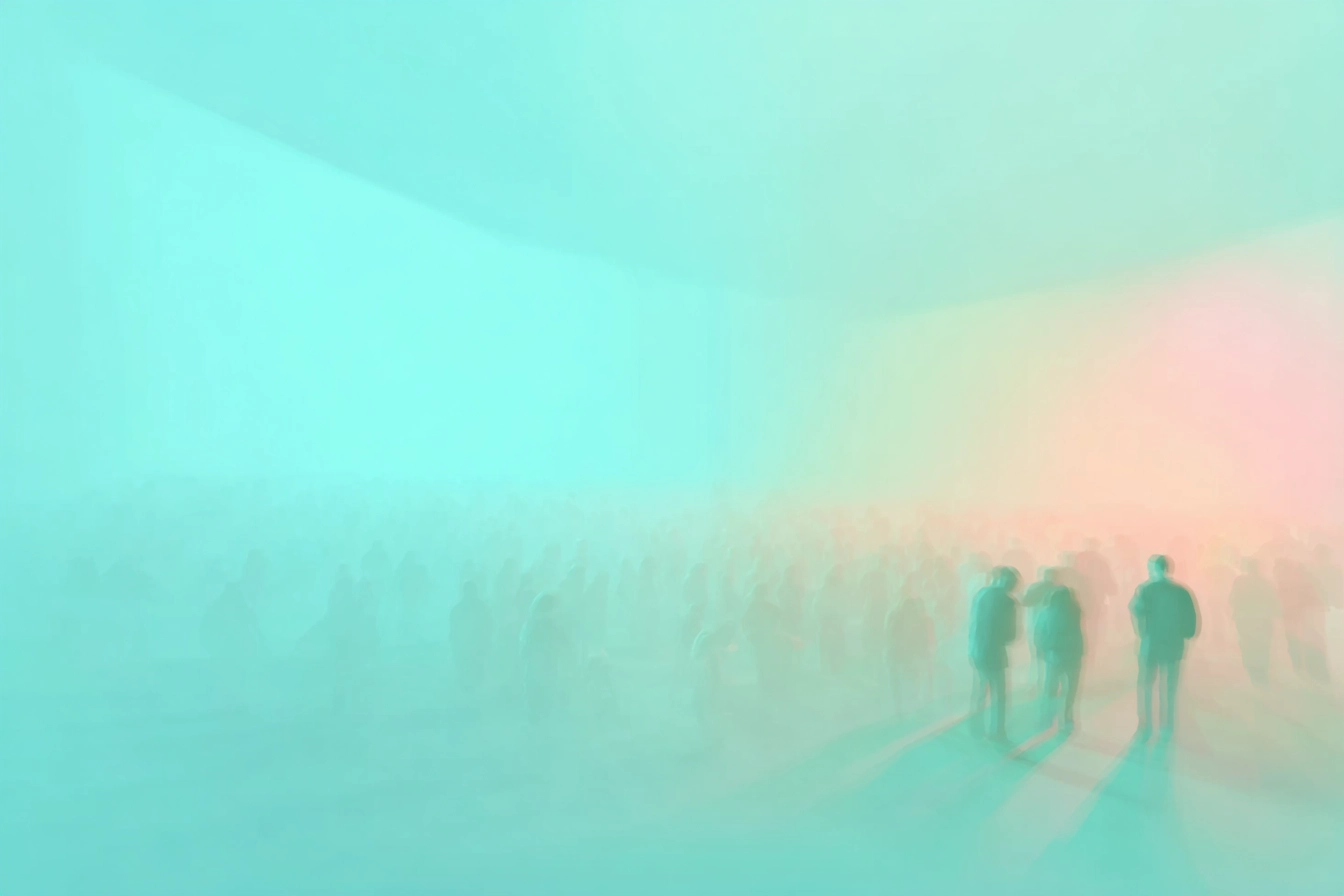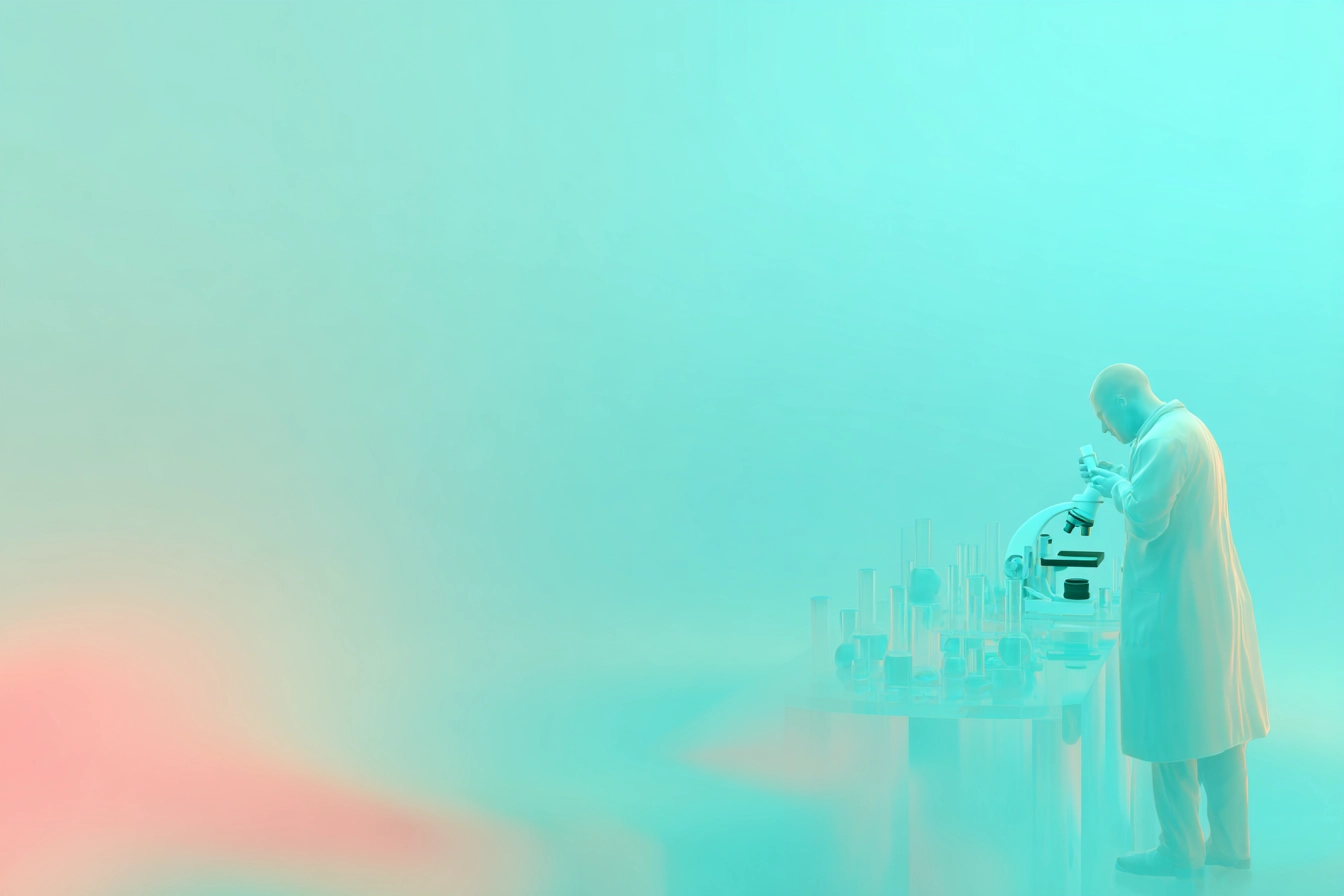PART I: Summary
📖 What’s This Paper About?
This paper explores the psychedelic aestheticism of the hippie movement and how it relates to broader philosophical concepts of aestheticism versus ethics. The author examines how the use of psychedelics like LSD in 1960s counterculture represented an aesthetic rather than political form of rebellion against technological society.
Why This Matters
Understanding the relationship between psychedelics, aestheticism, and religious experience helps explain why the 1960s counterculture movement ultimately fragmented and failed to achieve lasting social change. The tension between aesthetic escape and ethical engagement remains relevant to contemporary discussions about consciousness alteration and social transformation.
- Counterculture split into political activists (“New Left”) and non-political hippies seeking inner experience
- Psychedelics offered an illusion of transcending ethics to reach religious experience
- Aesthetic rebellion ultimately proved insufficient to address social problems
Top 5 Takeaways
1. Aestheticism vs. Ethics
Aestheticism represents a worldview focused on the self, sensory experiences, and psychological states, while ethics requires engagement with others and social responsibility. Philosopher Søren Kierkegaard identified aestheticism as the lowest stage of spiritual development.
2. Psychedelics and Religious Experience
Psychedelic experiences often mimic aspects of religious or mystical experiences, but lack lasting meaning or ethical transformation. While they can access transpersonal levels of consciousness, they typically fail to integrate these experiences into ethical life changes.
Keep Up with Uncensored Psychedelic Trends
Join our newsletter at Psychedelics Uncensored.
We respect and protect your privacy. By subscribing your info will be subject to our privacy policy . Unsubscribe easily at any time
3. The Split in Counterculture
By 1967, counterculture had split into two distinct approaches: the political activism of the “New Left” and the non-political, aesthetically-oriented hippie movement. Ken Kesey’s 1965 call to reject political protests in favor of personal exploration marked a crucial turning point.
4. Altered States of Consciousness
Humans universally seek altered states of consciousness (ASC), historically through ritual dance, shamanic practices, and various substances. The 1960s psychedelic movement represents one manifestation of this perennial human drive, responding to the perceived spiritual emptiness of technological society.
5. Psychedelics and Rock Music
Psychedelic rock became a key vehicle for transmitting hippie values and creating community. The highly rhythmic nature of rock music itself induces altered states of consciousness, creating a synergistic relationship with psychedelic drug use at music festivals and gatherings.
The Bigger Picture
The failure of 1960s counterculture reveals a fundamental tension between aesthetic rebellion and ethical transformation. While psychedelics offered powerful experiences of ego dissolution and transpersonal consciousness, they ultimately led many users toward escapism rather than social engagement. The movement’s inability to bridge the divide between inner experience and social action limited its lasting impact on society.
Final Thought
Psychedelic aestheticism reflects a recurring pattern in human culture: the tension between seeking transcendence through altered consciousness versus engaging with ethical demands of social reality. This tension remains unresolved in contemporary discussions of psychedelics’ potential benefits and risks.
PART II: Complete English Translation
PSYCHEDELIC AESTHETICISM OF HIPPIES
This paper examines the psychedelic aestheticism of the hippie movement within the broader context of counterculture in the 1960s and early 1970s. The problem of aestheticism is connected to the opposition between aesthetic and ethical approaches in European culture. The author explores how the hippie movement represented an aesthetic form of rebellion that differed from the political rebellion of the New Left, and how psychedelic substances played a key role in this aesthetic orientation. The paper analyzes the philosophical underpinnings of aestheticism, altered states of consciousness, and their connection to religious experience, demonstrating how psychedelics ultimately failed to create lasting social change despite offering powerful experiences of consciousness transformation.
Keywords: aestheticism, counterculture, hippies, psychedelics, LSD, altered states of consciousness, religious experience, rock music
The problem of aestheticism is connected with the opposition between aesthetic and ethical approaches in European culture. Kant was the first to show that ethics belongs to the sphere of reason, while aesthetics belongs to the faculty of judgment, meaning they are based on different principles and belong to different faculties of the soul.
Kantian aesthetics appears subordinate to ethics. The ability to judge, based on feelings of pleasure/displeasure that we experience in aesthetic experience, plays the role of mediator between understanding and reason. The faculty of judgment relies on the principle of purposiveness, which is evident when we engage with art. However, in nature, it is impossible to discover (know) purposiveness through understanding alone, so understanding becomes directly connected to the faculty of judgment. The faculty of judgment allows us to judge the purposiveness of nature, on one hand, through the feeling of pleasure (subjective purposiveness), and on the other, by appealing to understanding and reason (objective purposiveness). Kant calls the first aesthetic judgment and the second teleological judgment. It is precisely in combination with understanding and reason that the faculty of judgment allows us to go beyond subjectivity. But subsequent interpretations of Kant, for example, in F. Schiller, and then in early German romantics, emphasize the separation between aesthetics and ethics that Kant indicated. This laid the foundation for the emergence of aestheticism as an ideology, which first appeared in early German romantics. Subsequently, aestheticism became a popular life position in artistic circles and essentially became the ideology of bohemia.
By aestheticism we mean: 1) a worldview characterized by the self’s focus on itself, a state of insularity, as well as a desire for sensory/psychological experiences; 2) an ideology characterized by: aristocratism (“aristocrats of the spirit”); individualism; duplication of the world; cult of sensual pleasures (hedonism); amoralism/immoralism; life-creation; escapism.
Turning to the phenomenon of counterculture of the 1960s – early 1970s, we discovered that the ideology of this sociocultural phenomenon exhibits features of aestheticism and that counterculture partly belongs to the bohemian tradition. The term “counterculture” was introduced by T. Roszak in his famous work “The Making of a Counter Culture” (1969) and was used to characterize a type of protesting worldview typical of privileged students and intelligentsia, “children of technocrats,” of the late 1960s. But this was not a form of rejection of culture, but a protest against repressive civilization, and, as M. Sultanova writes, “translating the term ‘counterculture’ into Russian might be more correctly done as ‘counter-civilization,’ or as ‘anti-technogenic culture,’ or, for example, as ‘culture-counter,’ ‘culture of protest,’ etc.”
Within the general counterculture movement, several groups can be identified that pursued their more specific interests within the framework of fighting against modern technological civilization. Among them: the struggle for the rights of national minorities (primarily African Americans), women (feminism), sexual minorities, anti-war protests (pacifism), the struggle for environmental protection (ecologism, environmentalism), communitarianism, and the hippie movement. A. Minaev notes that in the youth counterculture of the 1960s, it is legitimate to identify two main directions: socio-political and non-political. The hippie movement was the most widespread manifestation of the latter. T. Miller also writes that the alternative culture of the 1960s was never monolithic, and within this phenomenon at least two very different positions toward the social crisis can be found: the “New Left,” an openly political opposition to the dominant culture, and hippiedom, a world of “dropouts” and cultural dissenters.
Initially representing some unity called “counterculture,” by 1967 hippies and the “New Left” began to strongly diverge in their views. The method of protest of hippies and the “New Left” can be interpreted as rebellion, in the sense that Albert Camus gives to this word: “I rebel, therefore we exist.” Young rebels perceived the world as an opposition between “us and them,” in which “they” embodied the ecological crisis, industrial society, alienation, and conformism. But the forms of this existential rebellion differed: for the “New Left,” political rebellion was characteristic; for hippies, aesthetic rebellion: “The movement of political protest was a great force, but signs of division appeared immediately. At demonstrations, more and more flowers and balloons replaced placards and revolutionary slogans, and The Beatles songs supplanted the hymn ‘We Shall Overcome.’ Growing sentiments of hedonism poorly combined with the military discipline usually required for leading political movements,” writes D. Stevens.
In October 1965, Ken Kesey, then a well-known writer and leader of the “Merry Pranksters,” a group of eccentric young people who were among the first popularizers of LSD and psychedelia, was invited to speak at a rally before protesters. Kesey was negative toward politics and urged young people not to participate in another “someone else’s game,” to turn away from the Vietnam War and related protests, which, in his opinion, were just another attempt of the “ego” to assert itself. Many young people followed his advice. These people were later called “hippies.” The “New Left” continued organizing protest marches and called for the overthrow of the government, while hippies gathered at music festivals and believed that the main thing was “peace and love,” and that the “Great Refusal” that counterculture ideologist H. Marcuse called for could be accomplished aesthetically. The emergence of this split in the initially unified movement of the 1960s and its subsequent failure was evidently facilitated by the phenomenon of psychedelia.
The discovery of psychedelic substances, and later the synthesis of LSD (in 1938), the subsequent excitement in scientific circles caused by the unusual nature and depth of these drugs’ effects, led to the emergence of “psychedelic therapy” in the late 1950s, which terminologically relied on psychoanalysis. However, later “psychedelic therapy” turned into “psychedelia,” which lost any medical control, and psychedelics were equated with drugs (although this assertion is still considered controversial) and banned (LSD in 1966). If initially LSD was produced by pharmaceutical companies, after the ban, its underground production began, which allowed the fashion for psychedelia to persist for several more years.
The discovery of psychedelics touched on such acute issues as experiencing religious experience, the ability of chemical substances to lead to stable changes in the psyche, the degree of human need for psychological experiences, and possible dependency on them. There was also a problem around the interpretation of psychedelic experience, which can be approached within at least two discourses: psychological, so to speak, classical, and formed by researchers in the 1960s non-classical, appealing to mystical concepts. The differences in interpretations are quite substantial: “Scientists studying psychomimetics, observing how the ego splits under the influence of LSD, briefly mention ‘depersonalization,’ while those encountering the same effect, like Leary or Myron Stolaroff, call it ‘mystical unification’ and ‘integrative experience.’ Observing the change of bright internal images, the former will choose the word ‘hallucinations,’ while the latter will speak of ‘visions and symbolic interaction.’ The subsequent emotional intensity can be designated by the psychiatric term ‘euphoria’ or replaced by its new psychedelic analogue ‘mystical ecstasy’.” Thus, the hallucinatory experience that accompanies taking LSD, called a “trip,” as well as the sensation of “expanding” consciousness, was difficult to describe in terms of traditional psychology.
How was the action of LSD and similar psychoactive substances scientifically explained? Proponents of psychedelia like Aldous Huxley relied on the “reduction valve” theory: our brain performs the function of a filter, significantly limiting the actual flow of sensory perceptions. This function of the brain is evolutionarily justified, protecting a person from sensory overload, but one can also see in this a brain-created obstacle to the “fullness” of experiencing life. Substances like LSD freed one from the “valve,” but only for the period of the psychedelic’s action, however, it was discovered quite quickly that qualitative changes in the psyche occur in those who took it.
Timothy Leary connected the practice of taking LSD with liberation from “attitudes,” from “biochemical imprinting” – the original picture of the world fixed by the brain that determines all subsequent learning (the theory of imprinting was proposed by Konrad Lorenz as a result of observing goslings). However, Danilin points out that in connection with the development of LSD therapy, “a special term even appeared: ‘pre-programming and situation’ (set and setting). In Russia, it is sometimes translated as ‘creating an attitude.’ The very concept of ‘attitude’ came to medicine from LSD therapy.” That is, essentially, it is more correct to speak not of getting rid of attitudes during an LSD session, but of replacing them with other attitudes. The state of mild suggestibility of someone in an “LSD trip” made them completely dependent on the therapist conducting the session. But by the mid-1960s, due to the growing popularity of using LSD to explore the “inner world,” sessions began to be led by “guides” – specially trained but non-medical personnel. LSD left the offices of psychotherapists.
Psychedelics in the 1960s were incredibly popular. Almost everyone who tried them once returned to them again. But how can we explain the attractiveness of this drug, the action of which consisted in experiencing hallucinations? B. Hübner indicates that due to the characteristic of modernity’s liquidation of metaphysics and Meaning, boredom “is now an existential and sociological fact and, due to its unbearableness and deadliness, is a permanent reason for its removal.” Boredom arises due to the presence in humans of a “meta-physical need,” indicating an excess of accumulated “meta-physical energy.” The “removal” of boredom can be produced from two different positions: “either the I initiates its movement toward a goal, toward the OTHER (GOD), giving it as a pledge its spirit, its body, its time, or it has to make the initiation (psychic) the goal of its actions.” We identify the second option with aestheticism. Looking at the phenomenon of psychedelia, we see that the metaphysical need for seeking Meaning within its framework takes the form of striving for psychological excitation, “high,” for the feeling of losing boundaries between “I” and “not-I,” for depersonalization. In some cases, psychedelic experience is closely connected with religious experiences.
I.S. Salnikov, relying on E.A. Torchinov, proposes using the concept of “religious experience” as the basis for the definition of religion: “Usually, religious experience is understood as the entire set of religious feelings and experiences, such as the experience of conversion, feelings of sinfulness, repentance, consolation, etc. The sphere of religious experience thus includes any mental states associated with the profession of any religion, including what is called mystical experience.” The latter is a designation for deep transpersonal experiences, empirical development of which became possible within psychedelic therapy. Experiments with LSD allowed identifying several levels of the unconscious in the psyche, conditionally they can be designated as individual (developed by Freud), collective (Jung), and transpersonal (Grof). It is precisely the latter level and experiences associated with it that “are the basis of both religious experience and religion as such.”
Close to the phenomenon of psychedelia and religious experience is the concept of “altered states of consciousness” (ASC), which includes a wide spectrum of qualitative changes in subjective experiences caused by various influences, including those not associated with taking psychoactive substances. The need for ASC can be observed throughout the entire history of humanity: for primitive peoples, the ways of changing perception were ritual dances, shamanic trance induction, taking psychoactive plant substances. Some anthropologists are convinced that the emergence of religion is directly related to ASC. For Europeans, the main purposeful ways of altering consciousness became the consumption of alcohol and drugs. But from the 19th century, the arsenal of methods began to expand, which was associated with the general mood of “spiritual searches.” Various methods of meditation came from the East, and Western psychotherapists also developed several techniques: sensory deprivation, holotropic breathing, hypnosis. The immediate predecessors of psychedelia were, according to Danilin, the fascination with spiritualism that spread in the 19th century in Europe and the USA, experiments in art at the beginning of the 20th century, especially the hypnotic and narcotic experiences of the surrealists, and, finally, the development of psychoanalysis, which demonstrated that “normal” people do not exist. The crisis of Christianity that began in the 19th century, followed by the predominance of the “Dionysian” (Nietzsche) principle in culture, prompted the search for the ecstatic and “otherworldly” outside traditional religion. The popularity of drugs, the fascination with spiritualism, interest in Eastern culture – all this became the consequences of the need for Western civilization to escape from Reason, Order, “Apollonian” culture. Kierkegaard defined this state as the “aesthetic stage of Spirit development,” or the natural state of a person. The main characteristics of this stage are the person’s focus on themselves, the pursuit of sensory experiences, dependence on the external world and, as a consequence, a state of despair. Despair, according to Kierkegaard, should have prompted a person to choose the ethical, that is, to “choose oneself.” If the transition to a higher stage did not occur, if the personality consciously remained an aesthete, then such a personality would be called “demonic.” But the ethical stage was not the limit. The next choice led a person to the religious stage, where he stood alone before God. Kierkegaard believed that women could bypass the ethical stage and make a leap directly from the aesthetic to the religious.
The popularity of psychedelics was associated with the illusion of an easy access to the sphere of the “divine,” bypassing (“leaping over”) the ethical. As observations show, psychological dependence on psychedelics is often observed in men and only in 5% of women. This is associated with men’s striving for “female” consciousness, the need, at least temporarily, to escape from the responsibility and demands that modern society places on them. This is a reluctance of the ethical, a reluctance to live for the Other and to “choose oneself,” but a desire to “lose oneself,” to dissolve in the “divine,” understood as “experiencing the divine.”
From the point of view of Christianity, religious and psychedelic experiences are by no means the same thing. But if we interpret religious experience broadly, the points of contact between it and psychedelic experiences are obvious, however, the difference is found in the consequences. As A.G. Danilin writes, “true intellectual wonder reveals to the saint the main thing – the meaning of the world’s existence. Psychedelic experience leads to the disappearance of the very ability to highlight the main thing in one’s soul and the surrounding world.” This difference can be understood by referring to the act of “choosing oneself,” which has not yet been performed by the aesthetic personality, meaning it has “nowhere” to return to after a psychedelic journey. Thus, psychedelia only hinders the overcoming of aestheticism, and when it turns into a psychological dependence – makes the choice of the ethical impossible.
When LSD “went mainstream,” the very attitude toward the purpose of the drug changed: with its help, people no longer traveled into the “inner world” for therapeutic purposes, within spiritual practices, but simply “relaxed,” “disconnected” from this world, used it for escapist purposes. The psychedelic experience itself became important. With the spread of psychedelia on a mass scale, the mystical component also began to disappear from it. Dr. Stanley Cohen asserted that most people who used LSD did not gain a radically new ability to penetrate the essence of their own lives or society. They only became unproductive, amoral citizens, lost in empty dreams that led nowhere.
It should also be noted that in the 1960s, the phenomenon of psychedelia became closely connected with rock culture, especially clearly seen in the example of psychedelic rock (psychedelic-rock). As observations show, listening to rock music also leads to altered states of consciousness, which is associated with its highly rhythmic nature. And although rock music is commonly considered music of protest, we note that until about 1966, folk was the music of rebels, which continued to accompany the “New Left” movement. For hippies, the best form of transmitting their ideas, which could not be expressed in scientific theories or political manifestos, became rock music. As M.A. Oleinik writes, “music becomes a kind of system-forming factor of culture, forming around itself a new sociocultural space (with its lifestyle, manner of behavior, external appearance, values, tastes, preferences, etc.).” If a rock composition can be represented as a combination of verbal and audio components, then it is obvious that in psychedelic rock, the predominant component is the second. This is connected both with the greater universality of music compared to poetry and with the purpose of psychedelic rock, performed predominantly at hippie music festivals, where people gathered in search of “Peace and Love,” and the place for these searches became “expanded” consciousness.
After the ban on LSD, interest in psychedelics temporarily fell, but active searches for other, non-pharmacological ways to achieve ASC began: “The consequences of the LSD epidemic and the failure of the commune idea led to increased influence of those teachings that prioritized mental methods of changing consciousness. In youth counterculture, they manifested in the form of widespread fascination with Eastern mysticism – meditation, gurus, and Zen. In the medical field, the search for special states of consciousness led to the development of group psychotherapy and so-called ‘Eastern’ psychological techniques. In the socio-political field, the experience of psychedelia opened the way to so-called ‘behavior modification’ programs,” writes A.G. Danilin.
Thus, the reason for the failure of the counterculture movement of the 1960s can be found in the split that occurred within it: the distinction between political and non-political directions. The phenomenon of psychedelia – taking psychoactive substances without connection to therapeutic goals – contributed to this. The popularity of the psychedelic movement was associated with the universal human striving to satisfy meta-physical needs. Initially, taking psychedelics was associated with achieving religious experience, and this tendency was further developed within transpersonal psychology. However, most young people of the 1960s used LSD and other psychedelics for escapist purposes. The result was an increase in passivity and maladaptation among hippies; sometimes uncontrolled intake of psychedelics led to mental disorders. Attempts at mass “consciousness change” ended by the early 1970s with disillusionment: with the help of chemical substances, it was not possible to create either a “new” person or a “new” society. The psychedelic revolution did not solve the problems of “repressive” technological society but showed that aestheticism is deeply rooted both in human psychology and in culture in general.
References
1. Bourguignon, E. (2001). Altered states of consciousness. In A.A. Belik (Ed.), Personality, culture, ethnos: Contemporary psychological anthropology (pp. 405-461). Moscow: Smysl.
2. Danilin, A.G. (2001). LSD. Hallucinogens, psychedelia and the phenomenon of dependence. Moscow: Tsentrpoligraf.
3. Kierkegaard, S. (1994). The harmonious development of aesthetic and ethical elements in human personality. In Pleasure and duty (pp. 227-419). Kyiv: AirLand.
4. Minaev, A.V. (2007). The hippie movement as a manifestation of youth non-political protest in the second half of the 60s in Western Europe and the USA. Collection of educational-methodical materials and scientific articles of the Faculty of History, Volyn State University, 13, 162-168.
5. Oleinik, M.A. (2009). Functions of music in European culture. Actual problems of humanities and natural sciences, 1(7), 172-176.
6. Salnikov, I.S. (2002). On some scientific definitions and concepts of religious forms of worldview in contemporary religious studies. Science, religion, society, 3.
7. Stevens, J. (2003). Storming heaven: LSD and the American dream. Moscow: Ultra. Kultura.
8. Sultanova, M. (2005). Philosophy of culture of Theodore Roszak: (An essay of philosophical journalism). Moscow.
9. Hübner, B. (2000). Arbitrary ethos and the compulsion of aesthetics. Minsk: Propilei.
10. Farber, D. (2002). The Intoxicated State/Illegal Nation: Drugs in the Sixties Counterculture. In P. Braunstein & M.W. Doyle (Eds.), Imagine nation: The American counterculture of the 1960s and ’70s (pp. 17-40). Routledge.
11. Miller, T. (1991). The hippies and American values. University of Tennessee Press.
This is informational, not medical advice.
Read the Original Russian Version
This translation is based on the original Russian academic paper. Access the source document to see the scholarly work in its native language.
Sources

1. Bourguignon, E. (2001). Altered states of consciousness. In A.A. Belik (Ed.), Personality, culture, ethnos: Contemporary psychological anthropology (pp. 405-461). Moscow: Smysl.
2. Danilin, A.G. (2001). LSD. Hallucinogens, psychedelia and the phenomenon of dependence. Moscow: Tsentrpoligraf.
3. Kierkegaard, S. (1994). The harmonious development of aesthetic and ethical elements in human personality. In Pleasure and duty (pp. 227-419). Kyiv: AirLand.
4. Minaev, A.V. (2007). The hippie movement as a manifestation of youth non-political protest in the second half of the 60s in Western Europe and the USA. Collection of educational-methodical materials and scientific articles of the Faculty of History, Volyn State University, 13, 162-168.
5. Oleinik, M.A. (2009). Functions of music in European culture. Actual problems of humanities and natural sciences, 1(7), 172-176.
6. Salnikov, I.S. (2002). On some scientific definitions and concepts of religious forms of worldview in contemporary religious studies. Science, religion, society, 3.
7. Stevens, J. (2003). Storming heaven: LSD and the American dream. Moscow: Ultra. Kultura.
8. Sultanova, M. (2005). Philosophy of culture of Theodore Roszak: (An essay of philosophical journalism). Moscow.
9. Hübner, B. (2000). Arbitrary ethos and the compulsion of aesthetics. Minsk: Propilei.
10. Farber, D. (2002). The Intoxicated State/Illegal Nation: Drugs in the Sixties Counterculture. In P. Braunstein & M.W. Doyle (Eds.), Imagine nation: The American counterculture of the 1960s and '70s (pp. 17-40). Routledge.
11. Miller, T. (1991). The hippies and American values. University of Tennessee Press.

 Psychedelics.com Team
Psychedelics.com Team










